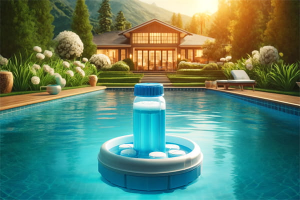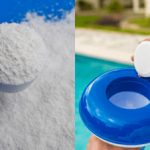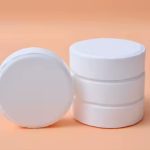Summer is in full swing, and for many of us, that means long days spent lounging by the pool. But as any pool owner knows, clear and safe water doesn’t happen by accident. A crucial part of maintaining your pool’s sparkle is proper chemical management. A common question that often pops up is: Can I put chlorine tablets in the pool skimmer? Yes, you certainly can, but doing so requires understanding the correct method to avoid potential pitfalls. Let’s dive into the nuances of using chlorine tablets effectively and safely in your pool maintenance routine.

Ⅰ.Understanding the Risks
1.Corrosion and Damage to Pool Equipment
One of the most significant concerns when placing chlorine tablets directly in the pool skimmer is the potential for corrosion and damage to your pool’s equipment. When the pool’s pump is inactive, the chlorine tablets continue to dissolve within the skimmer, producing a highly concentrated chlorine solution. This intense concentration can aggressively corrode metal components and lead to premature deterioration of both the pump and the filtration systems. Such continuous exposure to elevated chlorine levels does not only risk immediate damage but can also drastically shorten the lifespan of your pool’s essential hardware.
2.Uneven Chlorine Distribution
While it might seem convenient to use the pool skimmer for chlorine tablets, this method often results in uneven chlorine distribution. When the pump is operational, it circulates water, allowing the chlorine to spread throughout the pool. However, if the pump operates intermittently or for short periods, it may not adequately disperse the chlorine, leading to higher concentrations near the skimmer and lower levels in more distant areas. This uneven distribution can compromise the sanitation of your pool, potentially leaving some areas under-treated and susceptible to algae growth and other contaminants.
3.pH Imbalance
The concentrated release of chlorine from tablets in the skimmer can cause localized spikes in pH levels, making the pool water more alkaline. Chlorine naturally drives up the pH balance, necessitating not only regular monitoring but also frequent adjustments to maintain the ideal range of 7.2 to 7.8. This added complexity to your pool maintenance routine can increase the time and effort required to keep your pool water in optimal condition, and failing to maintain a balanced pH can irritate swimmers’ skin and eyes and interfere with the efficacy of other pool chemicals.

4.Skimmer Basket Damage
Lastly, the skimmer basket itself is at risk of damage from the direct contact with chlorine tablets. These tablets are inherently corrosive, and their confinement in the small space of a skimmer basket without adequate water flow to dilute their potency means the plastic may begin to weaken and degrade over time. This not only necessitates more frequent replacements of the skimmer basket but may also lead to unexpected failures, potentially affecting the functionality of your skimming system and leading to larger debris entering the filtration system, which could cause further complications.
5.Increased Chemical Waste
Utilizing chlorine tablets in the pool skimmer can lead to increased chemical waste. This occurs because the concentration of chlorine near the skimmer can sometimes exceed what is necessary to effectively sanitize the pool, particularly when the pump cycles off. As a result, when the pump restarts, it pushes a surge of overly chlorinated water into the pool, which can lead to overshooting the ideal chlorine levels. This often necessitates the addition of neutralizing chemicals to rebalance the pool, increasing both the complexity and the cost of maintenance.
Ⅱ.Safe Usage of Chlorine Tablets
1.Ensure Continuous Circulation
To mitigate the risks associated with using chlorine tablets in the pool skimmer, it’s crucial to ensure that your pool’s circulation system is running while the tablets are active. This continuous circulation helps distribute the chlorine evenly throughout the pool and prevents the concentration of chemicals in one area, protecting your equipment and maintaining consistent water quality.
2.Alternative: Floating Dispensers
Consider using a floating chlorine dispenser as an alternative to placing tablets directly in the skimmer. These dispensers allow chlorine tablets to dissolve slowly and disperse evenly, providing a safer option that reduces direct contact with your pool’s skimmer and other equipment.
3.Regular Monitoring and Adjustment
Keeping your pool sparkling requires regular monitoring and chemical adjustment. Test your water frequently to ensure the chlorine levels and pH are balanced. This proactive approach not only keeps your water safe but also extends the life of your pool equipment by avoiding extreme chemical fluctuations.
4.Routine Equipment Maintenance
Regular checks and maintenance of your pool’s equipment are essential. Inspect your skimmer, pump, and other related components for signs of wear or damage. Catching issues early can prevent costly repairs and ensure your pool remains a pleasant retreat for family and friends.
Ⅲ.Conclusion:
So, can you put chlorine tablets in the pool skimmer? Absolutely, but with great care. By understanding the risks and employing best practices, you can enjoy a well-maintained pool that becomes the centerpiece of your backyard oasis.





